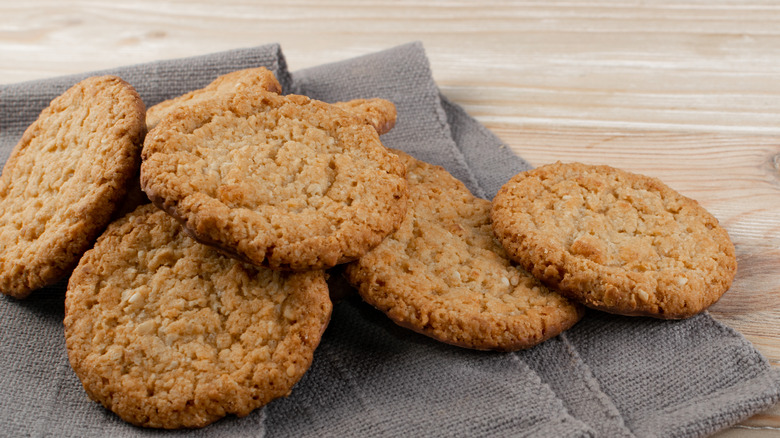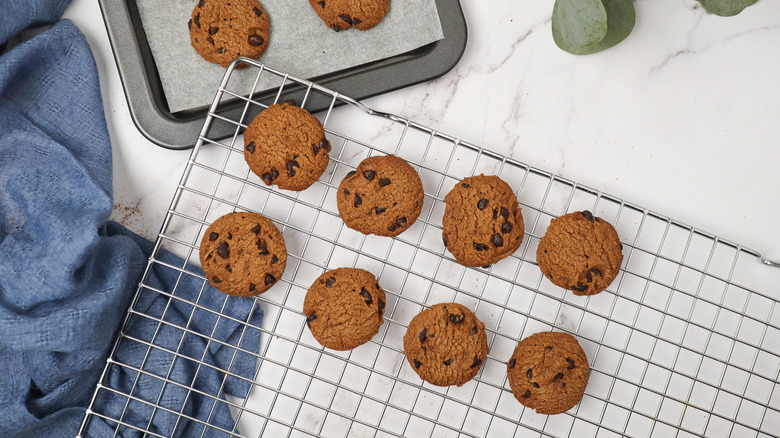Alex Guarnaschelli's Temperature Trick For Wafer-Thin Cookies
Whether or not you realize it, the texture of a cookie can change the way it tastes. It's a fact proven by science, Epicurious shares, but it's also influenced by personal preference. Some like their cookies thick and chewy, while others find ones that are thin and crispy more appetizing.
It can also depend on the type of cookie you're eating. Chocolate chip cookies that are soft and gooey might be your thing, but when it comes to sugar cookies, you might prefer them crunchy all the way through.
Though it's important to start with the right recipe, the consistency of the dough isn't the only factor that affects the texture of a cookie. According to celebrity chef Alex Guarnaschelli, temperature plays a major role, too (via YouTube). That's why she uses a strategic temperature trick that can be easily applied to any type of cookie dough to achieve wafer-thin cookies.
Adjust the oven temperature and baking time
Working with a cookie recipe that normally yields thick cookies? Before you hunt for a new recipe that produces thin ones, try the tip Alex Guarnaschelli shared on "Good Morning America" (via YouTube). Instead of baking your cookies at the temperature the recipe calls for, Guarnaschelli says to lower the heat and extend the baking time. This will cause the cookies to spread more.
Given that she has her own line of cookies, there's no shame in blindly following Guarnaschelli's advice, but there is an actual reason her hack works so well. As Baking is a Science explains, the lower temperature prevents the cookies from firming up. Instead, they spread — the opposite of what happens when you bake cookies at higher temperature.
That's also why the extra baking time is needed. If you were to take the cookies out of the oven at the same time with a lower temperature, they wouldn't be fully baked.
Try melting the butter, too
Alex Guarnaschelli's tip alone should be effective enough to thin out your cookie dough. But if you really want it to spread, Handle the Heat suggests melting the butter, too. This allows the cookies to flatten more and to develop ultra-crispy edges.
According to The Kitchn, melted butter produces thinner cookies because it acts as a liquid, rather than as a solid. As a liquid, the butter can better hydrate the flour, and in turn, more gluten is able to form. Cookie dough with these properties will naturally spread more when baked.
If you were to refrigerate the dough after adding melted butter, however, you'd get slightly different results. Except for the edges, the texture of the cookies would be soft, the outlet states. Therefore, for the thinnest, crispiest possible cookies, you'll want to adjust the temperature and time, per Alex Guarnaschelli's suggestion, but also use melted butter and skip chilling the dough.


